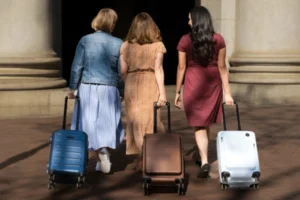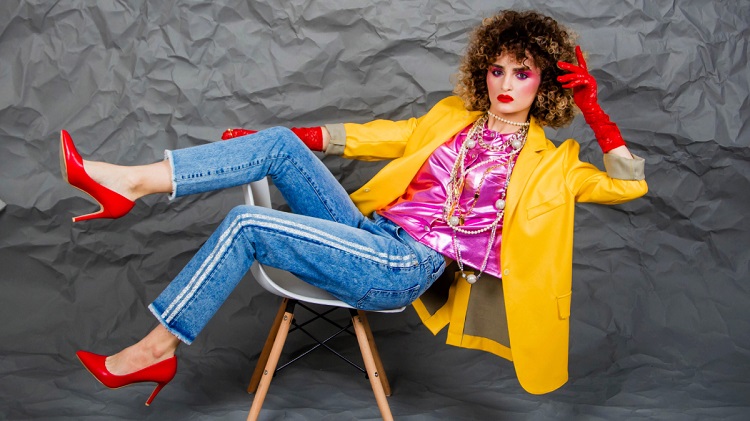Fashion is more than just clothing; it’s a form of self-expression, a reflection of culture, and an indicator of societal shifts. From the opulent styles of ancient civilizations to the dynamic trends of the 21st century, fashion has continually evolved, shaped by history, technology, and individual creativity. This article explores the fascinating journey of fashion through the ages, highlighting key periods, influential designers, and the role of technology in shaping the industry.
Ancient Fashion: A Display of Wealth and Status
Egyptian Elegance
In ancient Egypt, fashion was an indicator of social status and wealth. The Egyptians favored linen due to its coolness in the hot climate. Men and women both wore simple tunics, but the rich adorned themselves with intricate jewelry, elaborate wigs, and cosmetics. The pharaohs and elite classes showcased their power through elaborate garments and accessories, setting the foundation for fashion as a status symbol.
Greek and Roman Drapery
The Greeks and Romans introduced draped garments, emphasizing the natural form of the body. The Greeks’ chitons and the Romans’ togas were made from wool or linen and often fastened with pins and belts. These garments were not only practical but also represented freedom and democracy. The elegance of draped clothing continued to influence fashion for centuries.
Medieval and Renaissance Fashion: Opulence and Extravagance
Medieval Modesty
During the medieval period, fashion became more modest, influenced by the church’s authority. Clothing was heavy and layered, made from wool, linen, and sometimes silk for the wealthy. Sumptuary laws regulated what individuals could wear, aiming to maintain class distinctions. The period saw the introduction of pointed shoes, elaborate headwear, and the use of fur as a status symbol.
Renaissance Revival
The Renaissance brought a revival of art, culture, and fashion. Clothing became more extravagant, with rich fabrics like velvet, satin, and brocade. Men’s fashion featured doublets and hose, while women wore corsets, farthingales, and elaborate gowns. The period was marked by the rise of fashion centers like Florence and Milan, which influenced European styles.
The 18th and 19th Centuries: Fashion’s Golden Age
The Rococo Era
The 18th century Rococo era was characterized by elaborate designs, pastel colors, and intricate embroidery. French fashion led the way, with figures like Marie Antoinette setting trends. Women’s dresses featured wide panniers, while men wore frock coats and breeches. The era emphasized elegance and luxury, often at the expense of practicality.
Victorian Virtue
The 19th century Victorian era saw a return to modesty and structure. Women’s fashion included tight corsets, voluminous skirts supported by crinolines and bustles, and high necklines. Men’s fashion became more standardized with suits, waistcoats, and top hats. Industrialization allowed for mass production of clothing, making fashion more accessible to the middle class.
The 20th Century: Revolution and Innovation
The Roaring Twenties
The 1920s marked a dramatic shift in fashion, influenced by social changes post-World War I. The flapper style emerged, with women wearing shorter skirts, bobbed hair, and looser silhouettes. Coco Chanel revolutionized women’s fashion with her introduction of casual elegance, including the little black dress. Men’s fashion also became more relaxed, with baggy trousers and sweaters.
Mid-Century Modernism
The mid-20th century saw the rise of haute couture and the dominance of designers like Christian Dior, whose “New Look” emphasized femininity with cinched waists and full skirts. The 1960s introduced the mod style, with bold colors, geometric patterns, and miniskirts popularized by designers like Mary Quant. The era was marked by a rejection of traditional norms and an embrace of youthful rebellion.
The 1980s and 1990s: Bold and Diverse
The 1980s brought extravagance with bold colors, oversized silhouettes, and power dressing. Designers like Gianni Versace and Vivienne Westwood pushed the boundaries of fashion with their daring designs. The 1990s shifted towards minimalism and grunge, with figures like Marc Jacobs introducing a more laid-back, deconstructed aesthetic.
The 21st Century: Technology and Sustainability
Digital Revolution
The 21st century has seen the integration of technology into fashion. The rise of social media platforms like Instagram has democratized fashion, allowing influencers and consumers to shape trends. Online shopping and fast fashion brands have made clothing more accessible but also raised concerns about sustainability and ethics.
Sustainable Fashion
In response to environmental concerns, the fashion industry is increasingly focusing on sustainability. Designers and brands are adopting eco-friendly practices, using recycled materials, and promoting ethical production methods. The slow fashion movement encourages consumers to buy less and choose quality over quantity, emphasizing the environmental and social impact of their clothing choices.
The Role of Iconic Designers
Coco Chanel
Coco Chanel revolutionized women’s fashion by introducing simple, elegant styles that prioritized comfort and functionality. Her contributions, including the little black dress and Chanel No. 5 perfume, remain timeless icons in fashion history.
Yves Saint Laurent
Yves Saint Laurent’s innovative designs, such as the tuxedo jacket for women (Le Smoking), challenged traditional gender norms and redefined women’s fashion. His work continues to influence contemporary designers.
Alexander McQueen
Alexander McQueen’s avant-garde designs and theatrical runway shows pushed the boundaries of fashion as art. His legacy lives on through his innovative approach to design and his exploration of dark, romantic themes.
The Future of Fashion
Technological Advancements
The future of fashion will likely be shaped by technological advancements such as 3D printing, smart fabrics, and virtual fashion shows. These innovations have the potential to revolutionize the way we design, produce, and consume fashion.
Inclusivity and Diversity
There is a growing movement towards inclusivity and diversity in the fashion industry. Brands are increasingly showcasing a wider range of body types, ethnicities, and gender identities in their marketing and runway shows, reflecting a more inclusive approach to beauty and style.
Sustainable Innovation
Sustainability will continue to be a driving force in the fashion industry. Innovations in sustainable materials, circular fashion (where products are designed for reuse and recycling), and ethical manufacturing practices will shape the future of fashion.
Conclusion
Fashion is a dynamic and ever-evolving field that reflects cultural, social, and technological changes. From ancient civilizations to the modern era, fashion has continually adapted, influenced by historical events, iconic designers, and technological advancements. As we look to the future, the industry faces the challenges and opportunities of sustainability, inclusivity, and innovation, ensuring that fashion will remain a vital and vibrant part of human culture.
FAQs on Fashion: A Journey Through Time
1. How did ancient civilizations influence modern fashion?
Ancient civilizations, such as Egypt, Greece, and Rome, influenced modern fashion through their emphasis on drapery, use of luxurious fabrics, and incorporation of intricate jewelry. Elements like draped garments, geometric patterns, and statement accessories have roots in these early styles and continue to inspire contemporary designers.
2. What were some key fashion trends during the Victorian era?
The Victorian era was marked by modesty and structure. Key trends included tight corsets, voluminous skirts supported by crinolines and bustles, and high necklines. Men’s fashion featured tailored suits, waistcoats, and top hats. This period also saw the rise of industrialization, making fashion more accessible to the middle class.
3. How did the 1920s revolutionize women’s fashion?
The 1920s, known as the Roaring Twenties, revolutionized women’s fashion with the flapper style. This included shorter skirts, looser silhouettes, bobbed hair, and an overall more relaxed and casual look. Coco Chanel played a significant role, introducing casual elegance and iconic pieces like the little black dress.
4. What role does technology play in modern fashion?
Technology has greatly impacted modern fashion through the rise of social media, online shopping, and advancements in production methods. Social media platforms democratize fashion, allowing influencers and consumers to shape trends. Innovations such as 3D printing, smart fabrics, and virtual fashion shows are revolutionizing the design and consumption of fashion.
5. How is the fashion industry addressing sustainability?
The fashion industry is increasingly focusing on sustainability by adopting eco-friendly practices, using recycled materials, and promoting ethical production methods. The slow fashion movement encourages consumers to buy less and choose quality over quantity. Sustainable innovations and circular fashion, where products are designed for reuse and recycling, are shaping the future of fashion.








